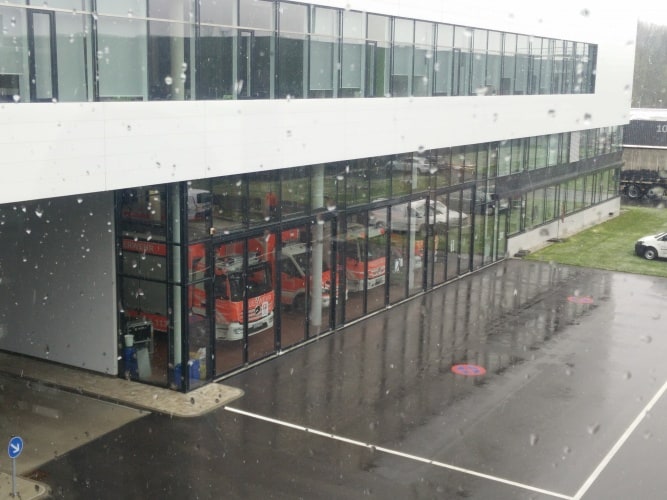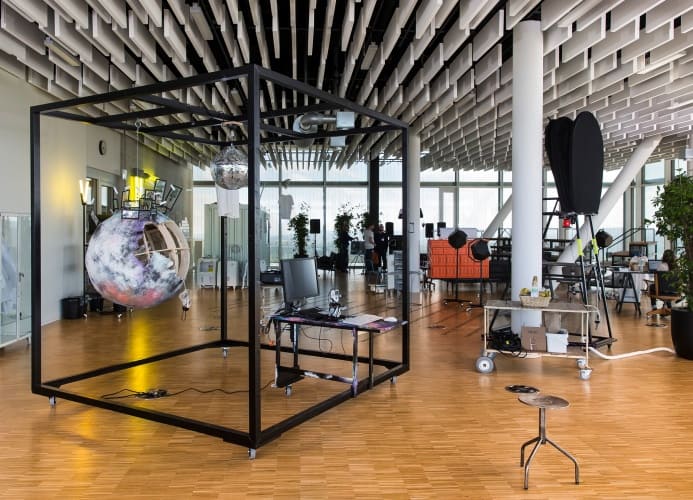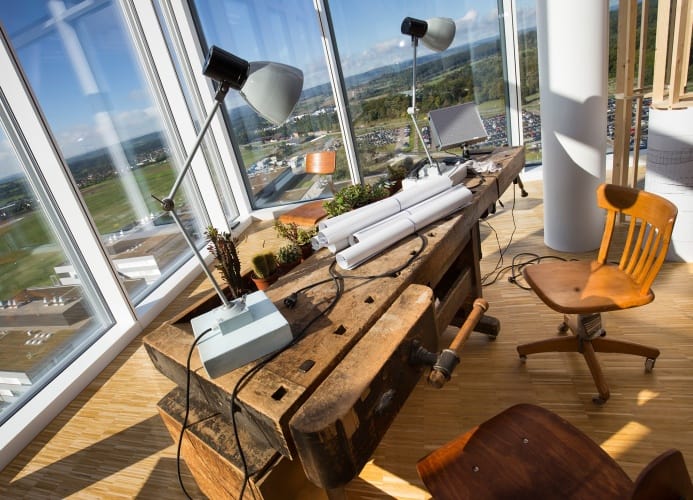 Andrew Wade
Andrew Wade
Senior reporter
Approaching Bosch’s new R&D centre in Renningen, near Stuttgart, the first thing you see is the 60 metre tall central building, its overlapping sections stacked like a hurried pile of glass-clad books. It’s an impressive structure, but not one you’d necessarily associate with the German engineering giant.
![[Credit: Roland Halbe]](/media/gazf2rkl/1-cr-21716_1-693x500.jpg)
Bosch is not a company prone to flights of fancy, but the Renningen campus is indicative of an evolving mindset, the Mittelstand meeting the new millennium. Engineering and digital technology are becoming increasingly entwined, and Bosch is bringing together knowledge from across its entire organisation to embrace the changing landscape. Physics, chemistry, analytics, mobility, production technology and systems are all represented in individual buildings on the new site.
“Like a university, our campus brings together many faculties,” Bosch CEO Volkmar Denner said at the centre’s opening back in October.
“Here, we want our researchers to do more than just think about what the future could bring. We want them to be successful entrepreneurs as well. Renningen is Bosch’s own Stanford. And at the same time, the centre is an expression of our faith in Germany as a technology location.”

Alongside the various ‘faculties’ mentioned above, the campus is also home to a clean room building, a workshop building and a vehicle production hall, as well as, intriguingly, its own fully operational fire station; a reminder, perhaps, that the alchemy of innovation can sometimes be a dangerous game. A disused airfield nearby the building cluster provides Bosch with a ready-made test track for its mobility solutions, a segment that makes up nearly 60 per cent of the company’s total revenue.
Populating the research campus are 1,200 Bosch ‘associates’ (employees), along with 500 PhD students and interns. Previously, these people were spread across three different locations around the greater Stuttgart area, and the hope is that proximity will now breed innovation through cross-discipline pollination. Buildings are apparently laid out in such a way that workers are generally within 10 metres of a meeting room, and spaces for both collaboration and individual activity are dotted throughout.

It's all geared to have something of a West Coast feel, even if on the day we visited the driving snow was more St Moritz than Silicon Valley. One key element borrowed from the tech world is the ‘10 per cent’ of working hours that employees are encouraged to spend on projects that fall outside their ordinary remit. A concept famously championed by Google, this slice of time dedicated to more experimental ventures has been adopted by other tech firms, including Facebook and Apple.
In Bosch’s case, the top floor of its central building – known as Platform 12 – has been decked out as a space for staff to indulge their creative tendencies. Power tools and 3D printers sit between crates of Lego and modelling clay, with whiteboards and LCD screens scattered among the vintage furniture. Floor to ceiling glass makes for beautiful views across the Swabian countryside.

The whole thing is very un-Bosch, and I guess that’s the point. To adapt in a rapidly changing world, engineering goliaths such as themselves need to be flexible. Quantifying the value of Platform 12 and the ’10 per cent’ time will be difficult, but there's something heartening about this most traditional of German firms being open to a new approach in the pursuit of innovation.




Nanogenerator consumes CO2 to generate electricity
Whoopee, they've solved how to keep a light on but not a lot else.